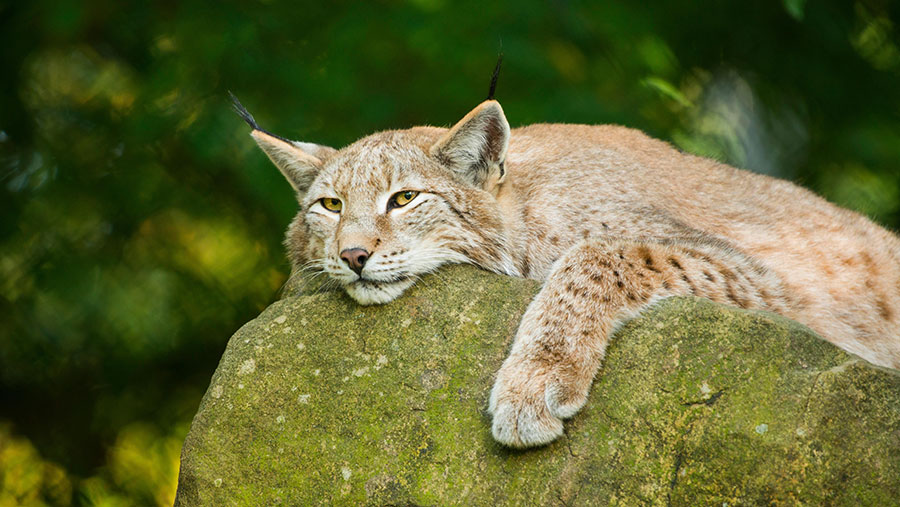Opinion: Government U-turns could yet see lynx in Kielder
 © Frank Sommariva/imageBROKER/Shutterstock
© Frank Sommariva/imageBROKER/Shutterstock It’s déjà vu all over again. We’re back in lockdown. But this time we were better prepared, having made a last-minute trip to the hairdressers and purchased a large pack of loo roll on the way home.
Furthermore, it seems that a member of our household actually got Covid back in March, so we have probably already had some exposure to the virus without getting sick.
See also: Sheep farmers criticise proposals to release lynx in Scotland
But in another repeat of the recent past, I read that the head of Natural England wants to introduce Eurasian lynx into Kielder Forest.
Possibly wolves too – whatever, he’s up for it. The Lynx UK Trust seems more geared up for it than the wolf fans, so they get first dibs.
Apparently, they are going to get an application in before Christmas to release six Swedish big cats into Kielder.
Let us remember that it is less than two years since a similar proposal was formally rejected by Michael Gove MP in, what was for me, rather a highlight of his time as secretary of state at Defra. This was on the advice of, yes, Natural England.
So what could have happened to justify resurrecting this idea from the bin marked “Truly stupid suggestions – do not touch with a bargepole”?
It would appear the only new factor is a change in personnel in the role of Natural England chairman. I didn’t see the job spec, but surely the perks didn’t include getting to choose a favourite alien predator to inflict on the English countryside?
In 2018, Mr Gove asked Natural England not only to advise on the lynx application, but also to do a full assessment of how the proposal met international guidelines on reintroductions and translocations.
It was concluded that the lynx application did not meet the necessary standards. Defra stated that the decision emphasised the government’s “desire to ensure project proposals are comprehensive, meet international guidelines and are sufficiently supported by stakeholders”.
The statement went on to indicate that approval for species reintroduction would require “clear environmental and socio-economic benefits”.
I detect no change in attitude in local stakeholders or any new socio-economic benefits. Northumbrian tourism has boomed this year after lockdown and does not appear to need imported nocturnal cats to drum up trade.
Coincidentally, last month it was reported that numbers of the Iberian lynx in Spain and Portugal are “soaring”.
In 2002, there were thought to be fewer than 100 of them in the wild and they were on the critically endangered list.
They are still officially endangered, but no longer critically so, as numbers have now increased to more than 900, following a conservation and active breeding programme.
Indeed, it has been reported that “the programme has been so successful that the species has spread well beyond the original 100sq mile release area”.
A key success factor has apparently been that the Iberian lynx has modified its diet and moved on from mainly rabbits to other things. Who knew? Happy days for the Iberian lynx.
None of this provides any reassurance to Northumbrian sheep farmers facing the prospect of lynx being released into Kielder, spreading out and developing a taste for lamb.
No U-turns please, and no lynx in Kielder.
